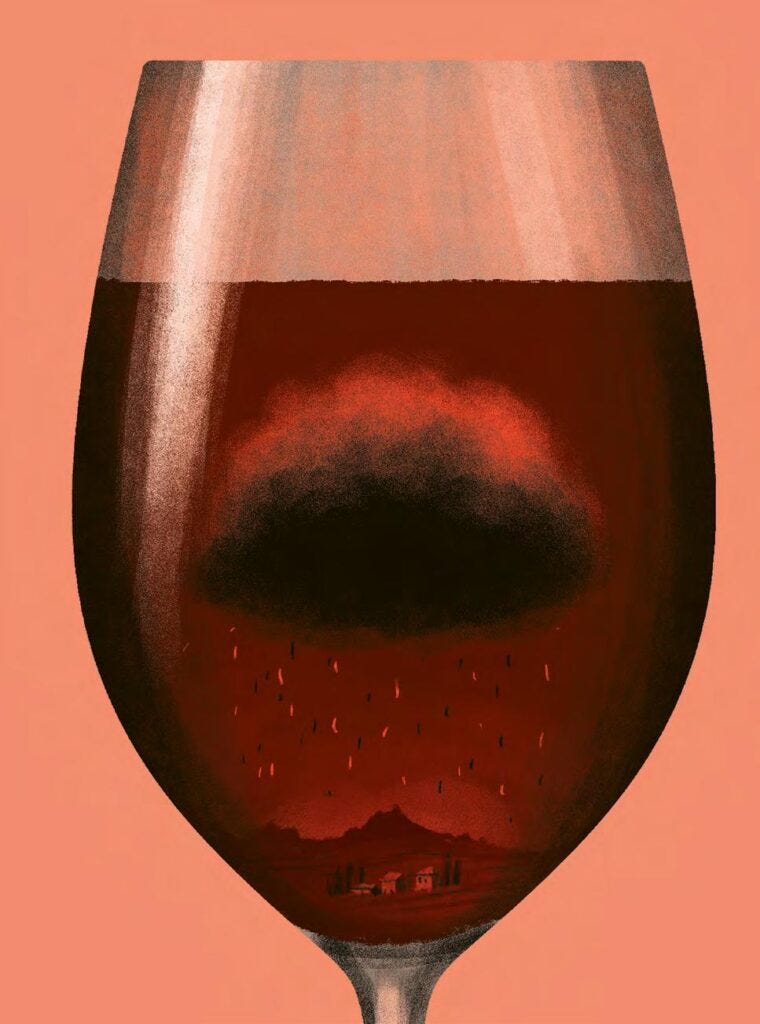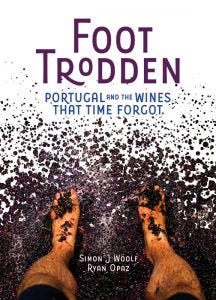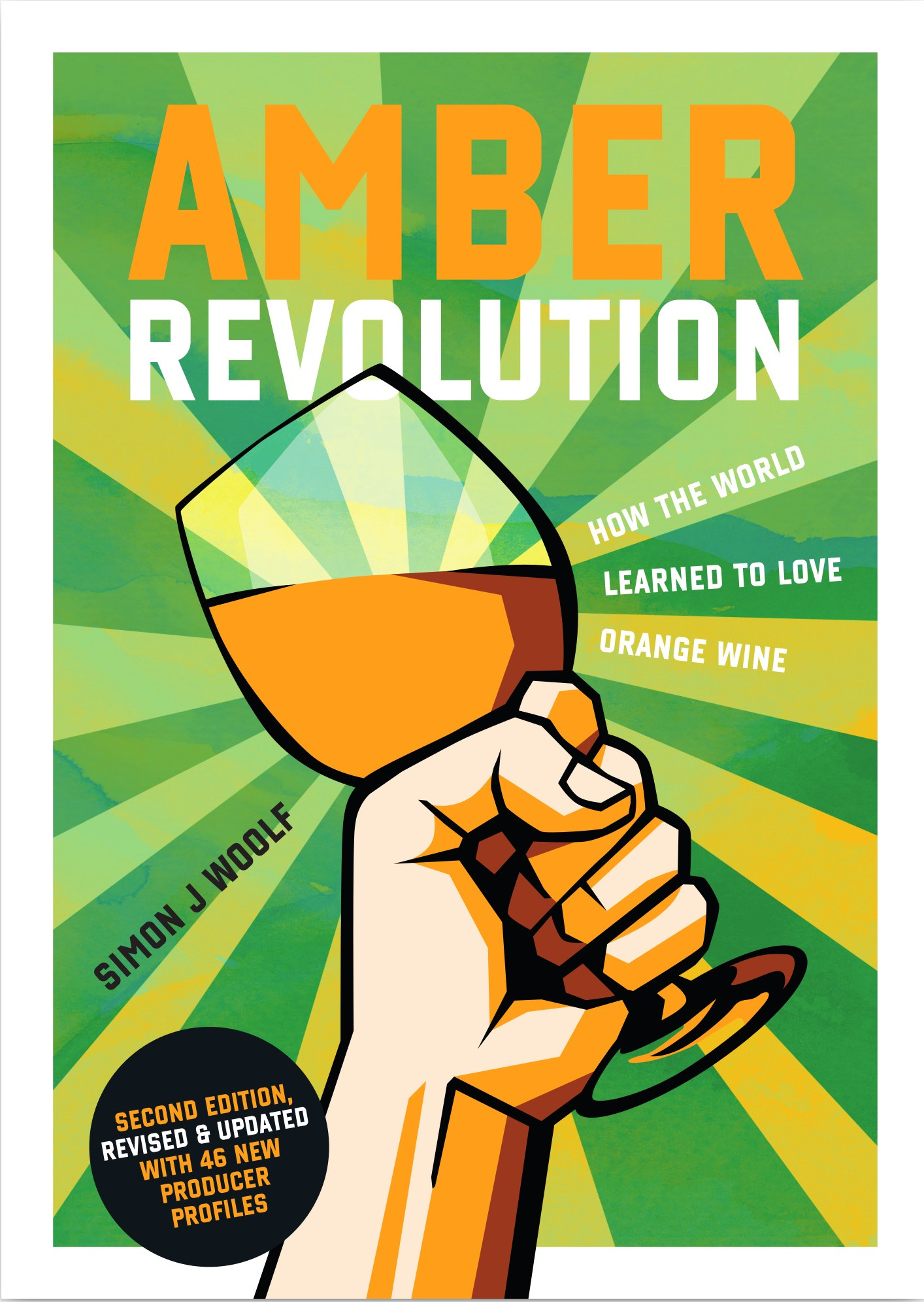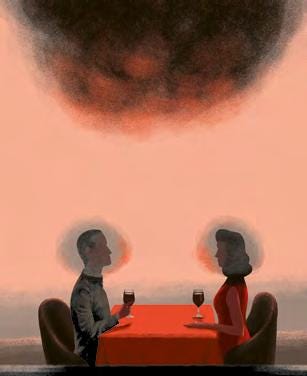Natural wine shouldn't be a style
Natural wine was supposed to be about ideals, but did it just became a style equated with cloudy, funky wines?
Amsterdam has become so natural wine obsessed that it’s getting hard to find a decent restaurant or bar that sells anything else. Even my local bakery and a nearby art gallery are pushing the natty stuff. I’m not complaining, but it’s surely only a matter of time before someone opens a competing Conventional Wine Bar. It will boast novel features such as full sized glasses, comfortable seating and sommeliers who don’t give you a lecture on sulphites before you are allowed to order.
Enough of the snide remarks. Popularity breeds contempt, but that’s not all. One noticeable trend, in no sense limited to Amsterdam, is the metamorphosis of ‘natural’ from a philosophical construct into a stylistic cliché. By way of example I asked Niels Wouters, head wine honcho at the eternally popular Hotel de Goudfazant, what people are drinking these days. “Anything as long as it’s cloudy and yeasty” was his response. And no, he wasn’t talking about beer.
What’s wrong with this picture? When Messrs. Chauvet, Lapierre and Néauport (the Beaujolais pioneers of vin nature) began their travails to vinify without additives, their goal was simply to make more expressive, more honest wine. There was no style council. They were not trying to perfect the magic glou glou formula and there was no manifesto stating that the results were supposed to look like swamp juice or smell like old socks. They were, au contraire, famously analytical in their approach. The aim was to develop and refine the art of low intervention winemaking, and to repair the reputation destroyed by years of bojo nouveau swill.
Perhaps it was inevitable that as more vignerons joined the vin nature bandwagon, there would be a dilution of quality. It takes serious skill and experience to produce outstanding wine without the safety net of lab yeasts, must corrections, clarification and sulphites. Not to mention perfect fruit and exemplary vineyard work. Adding to the problem, there is no shortage of well-meaning growers who confuse ideology with religion. As Aaron Ayscough points out in his book The World of Natural Wine, two distinct natural winemaker breeds now exist. The pragmatists intervene when necessary with a pinch of sulphites or gentle temperature control, if it means better wine – sometimes any wine instead of vinegar. The radical ideologues adhere at all times to a strict zero-zero mantra, insisting that this is more important than the end result.
These diehards surely prompted the backlash from the more traditionalist side of the industry. But all those old school hacks and dyed-in-the-wool oenology professors who slagged off natural for years never imagined this: there is an audience that loves everything they warned us about. The cidery smells, whiffs of cow’s nether regions, vinegar notes and even the dreaded mousiness. Every natural wine bar proprietor has their story about the customer who demanded the most whacked out, off-smelling bottle on the premises. And then came back for more.
Call it natural, real, authentic, minimal intervention, the end game was never supposed to be faulty wine. Yet there are fans of the genre who now equate natural wine with these stylistic traits, and even express disappointment if they’re served a glass that’s squeaky clean and defect-free. I’ve suffered those suspicious glances, when I open a bottle for natty-minded friends that seems too star-bright, too perfect, too stable. The thought bubbles hang in the air, potent as the bouquet of a 1990s Musar: “Is this really natural?”.
Admittedly, perfection is boring in wine, in art and in life itself. Exceptional wine is frequently idiosyncratic, with wrinkles or what the trade once referred to as “a bit of dirt”. I am the first to welcome some rustic charm to the table, and there are times when I crave a properly stinky, uncompromising bottle. Domaine des Mathouans’s outspoken, spiky macerated Muscat 'Mine de Rien' springs to mind. Yes, I am sure some of those aromas are the devil’s – aka brettanomyce’s - own doing. But who cares? It’s delicious and moreish.
But there’s beauty in purity too. If the winemaker crafts a refined and crystalline cuvée with minimal intervention, they deserve some props. But such excellence is liable to be spurned in the more fashionable sans soufre watering holes for being too “straight” or “not natural enough”. Try opening one of Alvin and Stephanie Jurtschitsch’s ethereal Rieslings for a bunch of hardcore nattophiles if you don’t believe me. Apparently it’s not enough for natural wine to have its credentials in order. It also has to conform stylistically to what the faithful have decreed.
When the pioneers of vin nature began their travails, their goal was simply to make more expressive, honest wine. There was no manifesto stating that the results were supposed to look like swamp juice.
The irony is tangible. The goals that growers often strive for – purity, elegance, focus – become negatives instead of positives. Not to mention individuality. One of the natural wine movement’s key tropes is the fight against homogenisation in wine. Selected yeasts, enzymes, must corrections equal identikit, commercial and dull. But step into the average natural wine bar and the lack of stylistic diversity might surprise you. Light, low alcohol whites are favoured, all the more so if they have a touch of funkiness on the nose – no fat b-lines here, that’s natty-speak for brett, or possibly reduction. If it’s red or orange, no tannins please. Natural wine fans happily sup on the acidity of a car battery, but they are snowflakes when it comes to structure. Did someone say Barolo? Not a chance, but they did say carbonic maceration.
Yes, I'm looking at you, glou glou – those now ubiquitous light, easy-going reds with the aromatic whole-bunch signature and about as much terroir expression as a diet coke. Some say they are baked into natural wine’s heritage, with Beaujolais and Gamay cited as collateral. But hold up. Lapierre and his colleagues hail from Morgon – a village home to some of Beaujolais’s most muscular, age-worthy reds. And even if Gamay lends itself to making juicy vin de soif, should Carignan, Cabernet Franc or Tannat be dumbed down to the same level? Admittedly, these wines are cash cows for all concerned, rushed onto the shelves as young as possible and drunk up within a year. But all that carbonic love can get very samey. And let’s not get started on pét-nats, often just a form of carbonated glou glou where the biggest point of difference from bottle to bottle is the label design.
So where to point the finger? Biodynamic zealots, proselytising sommeliers, natty bros? The conflation of philosophy with style, and the corresponding narrowing of what constitutes ‘natural’ can feel like a doom spiral. We are all responsible. Natural wine buyers and fans clamour for particular styles and the growers gladly oblige, shrinking the stylistic parameters in ever decreasing circles. The natural wine intelligentsia may claim that theirs is a radical, counter-culture movement, but winemakers still need to eat and most want to turn a profit. There are commercial imperatives at play.
Just as producers in the 1990s got the message that high alcohol, heavily oaked cuvées were more likely to get them glowing reviews from certain wine critics, so now minimal-intervention growers are equally clear about which side their organic sourdough toast is buttered. Keep the alcohol low, the acidity high and the oak undetectable. All the better if the wine is at least lightly cloudy. Bonus points are available for floaties and crown caps.
That said, 'cloudy' also became a code-word, almost synonymous with “natural” in some circles. Slovenian grower Miha Kelhar’s sense of humour is as dry as a zero dosage Champagne, but when he tells you that he makes “cloudy wine” it’s just convenient shorthand. Kelhar’s wines, bottled under the name Keltis, are pure, precise and barely more than hazy. But “cloudy” is a lot more concise than rolling out the whole ideological and philosophical backstory. After all, you can’t drink ideology, but you can drink cloudy. The headline here: natural is now a flavour, and not just when it comes to yogurt.
Resistance is futile. Craft beer reduced itself to recognisable formulas like New England IPA and Farmhouse Ale. Third-wave coffee mutated into a synonym for high acid, sour Ethiopian. Everything becomes a self-parody eventually. We used to complain that natural wine was fuzzy and undefined. Now the market evolved its own reductionist description. Sometimes you just can’t win.
Originally published in Noble Rot issue 32.






Excellent stuff. If we had a winemaking philosophy it'd be do as little as you can but.... don't f**k it up .
As an aside one of the benefits of age is having been around in the 1980s , many wines were unclean - Bretty, oxidative and made with natural yeasts because, that's all they knew. The cure was often a big whack of sulphur so things were hit and miss but boy, the good wines were so good.
You could stop after just the title 👌🏻